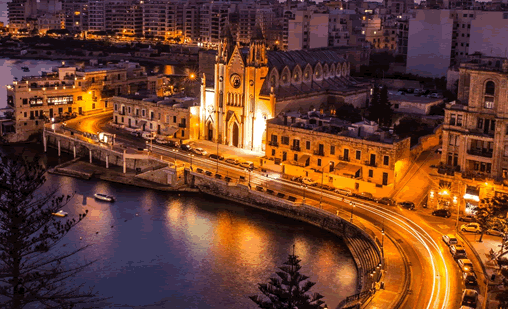Brief profile of the Republic of Malta
 The ancient Greeks called the island “Melite” meaning “honey-sweet” from the Greek word “meli” meaning “honey,” which refers to the island’s honey production
The ancient Greeks called the island “Melite” meaning “honey-sweet” from the Greek word “meli” meaning “honey,” which refers to the island’s honey production
Malta runs a Parliamentary type of Government with its capital; Valletta.
She attained independence on 21st September 1964 (from the UK) and became a Republic on December13, 1974
National holiday: Independence Day, 21 September; Republic Day, 13 December.
Malta has 68 Administrative Divisions: (Il-lokalita); Attard, Balzan, Birgu, Birkirkara, Birzebbuga, Bormla, Dingli, Fgura, Floriana, Fontana, Ghajnsielem, Gharb, Gharghur, Ghasri, Ghaxaq, Gudja, Gzira, Hamrun, Iklin, Imdina, Imgarr, Imqabba, Imsida, Imtarfa, Isla, Kalkara, Kercem, Kirkop, Lija, Luqa, Marsa, Marsaskala, Marsaxlokk, Mellieha, Mosta, Munxar, Nadur, Naxxar, Paola, Pembroke, Pieta, Qala, Qormi, Qrendi, Rabat, Rabat (Ghawdex), Safi, San Giljan/Saint Julian, San Gwann/Saint John, San Lawrenz/Saint Lawrence, Sannat, San Pawl il-Bahar/Saint Paul’s Bay, Santa Lucija/Saint Lucia, Santa Venera/Saint Venera, Siggiewi, Sliema, Swieqi, Tarxien, Ta’ Xbiex, Valletta, Xaghra, Xewkija, Xghajra, Zabbar, Zebbug, Zebbug (Ghawdex), Zejtun, and Zurrieq.
The Mediterranean country’s GDP growth remains strong and is supported by a strong labor market.
The government has implemented new programmes including free childcare to encourage increased labor participation.
The high cost of borrowing and small labor market remains potential constraints to future economic growth. Increasingly, other EU and European migrants are relocating to Malta for employment, though wages have remained low compared to other European countries. Inflation remains low.
Amendments: proposals (Acts of Parliament) require at least two-thirds majority vote by the House of Representatives; passage of “Acts” requires majority vote by referendum, followed by final majority vote by the House and assent by the president of the republic; amended many times, last in 2016 (2017)
Malta’s free market economy relies heavily on trade in both goods and services, principally with Europe. Malta’s economy is dependent on foreign trade, manufacturing, and tourism. Malta joined the EU in 2004 and adopted the euro on 1 January 2008.
Malta has weathered the euro-zone crisis better than most EU member states due to a low debt-to-GDP ratio and financially sound banking sector. It maintains one of the lowest unemployment rates in Europe, and growth has fully recovered since the 2009 recession. In 2014 through 2016, Malta led the euro zone in growth, expanding more than 4.5 per cent per year.
Malta’s services sector continues to grow, with sustained growth in the financial services and online gaming sectors. Advantageous tax schemes remained attractive to foreign investors, though EU discussions of anti-tax avoidance measures have raised concerns among Malta’s financial services and insurance providers, as the measures could have a significant impact on those sectors. The tourism sector also continued to grow, with 2016 showing record-breaking numbers of both air and cruise passenger arrivals.
Malta’s GDP growth remains strong and is supported by a strong labour market. The government has implemented new programs, including free childcare, to encourage increased labor participation. The high cost of borrowing and small labor market remains potential constraints to future economic growth. Increasingly, other EU and European migrants are relocating to Malta for employment, though wages have remained low compared to other European countries. Inflation remains low.
Credit: CIA
Source: GNA
